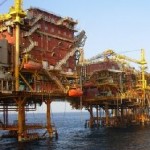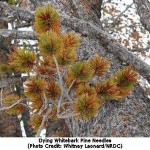
Storing massive amounts of carbon dioxide underground in an effort to combat global warming may not be easy to do because of the potential for triggering small to moderate earthquakes, according to Stanford University geophysicist Mark Zoback.
While those earthquakes are unlikely to be big enough to hurt people or property, they could still cause serious problems for the reservoirs containing the gas.
“It is not the shaking an earthquake causes at the surface that creates the hazard in this instance, it is what it does at depth,” Zoback said. “It may not take a very big earthquake to damage the seal of an underground reservoir that has been pumped full of carbon dioxide.”
Carbon dioxide is a major cause of a global warming. In many countries, including the United States, China and India, the majority of carbon dioxide is produced by coal-burning power plants and refineries. Keeping some of that carbon dioxide from entering the atmosphere by storing it underground could reduce the amount of warming.
The other complication, Zoback said, is that for sequestration to make a significant contribution to reducing carbon dioxide emissions, the volume of gas injected into reservoirs annually would have to be almost the same as the amount of fluid now being produced by the oil and gas industry each year. This would likely require thousands of injection sites around the world.
“Think about how many wells and pipelines and how much infrastructure has been developed to exploit oil and gas resources over the last hundred years,” he said. “You need something of comparable scale and volume for carbon dioxide sequestration.”
A Continent Crisscrossed by Ancient Faults
The problem with potential earthquakes arises, Zoback said, because the interior of the continent is crisscrossed by ancient faults that are often poised to fail – what he calls “a state of failure equilibrium” – because of the immense tectonic forces acting on them.
Those forces drive the huge tectonic plates across the surface of the globe and trigger the occasional violent upheavals on faults along the plate margins, such as the San Andreas Fault zone. Those tectonic forces exist even in the interior of the country, far from California and the San Andreas.
The interior may seem quite stable viewed on a human time-scale, but that is only because the rate at which the intra-plate faults are failing is quite slow, Zoback said.
“So, in that context, when we start perturbing the system by changing fluid pressure (as we inject massive amounts of carbon dioxide into the sub-surface), we have the potential for activating faults,” he said.
Zoback emphasized that any earthquake triggered by injecting gas would have happened anyway, because the fault was going to fail eventually. “You are just advancing the time at which the earthquake occurs,” he said. But the quakes would still be potential hazards to the reservoirs.
Many of the most promising potential sites for reservoirs are saline aquifers about two to three kilometers underground, deep enough that that they are not in contact with the biosphere. There are many such aquifers in ancient geologic formations, especially in the upper Midwest, Zoback said. And since the water in them is too salty for consumption or irrigation, they are good candidates.
But those formations also tend to be dense, well-cemented sedimentary rock, with low permeability, and they may not be able to accept large amounts of fluid before becoming stressed to the point of failure.
“These are the settings most likely to induce seismicity,” Zoback said. “And this is true of many of the places being considered.”
Zoback said there are other sites, including some with saline aquifers, where the rock is weaker and would be better able to accept large amounts of gas without spawning seismicity. And because the locations of most large faults are well mapped, it should be fairly easy to avoid provoking the sort of shaking that would harm people and property directly, so the problems are not necessarily insurmountable.
“I am not against carbon dioxide sequestration by any means and it certainly has a role,” Zoback said. “What I am asking people to consider is whether or not it should really be one of the key components of a strategy for reduction of greenhouse gas.”
Even if earthquakes are induced, he said, it would not be an issue of immediate safety. It would take a fairly large earthquake to create a rupture that would send carbon dioxide pouring back to the surface and that situation should be fairly easy to avoid. To get big earthquakes, you need big faults and locations such as that would be ruled out during the selection process.
The problem Zoback foresees is that the seismicity could create small pathways through the rock by which carbon dioxide would gradually seep back into the air.
“If the carbon dioxide permeates back out of the reservoir, the effort to keep it out of the atmosphere will have been futile,” he said. In addition to failing to solve the problem, a lot of time and money would turn out to have been wasted.
Sequestration Projects are Under Way
There are two sequestration projects already under way, in Norway and Algeria, and so far, they appear to be working as planned. But Zoback said 3,400 such projects would be needed worldwide by mid-century to deal with the volume of carbon dioxide that we will be generating.
“Finding that many ideal sites around the globe is not impossible, but it is going to be a tremendous challenge,” he said. And while some view the issues associated with injecting gas into the sub-surface as mainly a technical challenge, Zoback thinks that challenge may not be an easy one to engineer around.
“My main concern is to get these geological issues out on the table,” he said. “I want to get the discussion started.”
If sequestration does become a major part of the effort to reduce greenhouse gases, a public education campaign will be needed, Zoback said.
“If we make a massive commitment to injecting carbon dioxide into sub-surface reservoirs and then public concern over the earthquakes shuts it all down, then where are we?”
Source: Stanford University.












